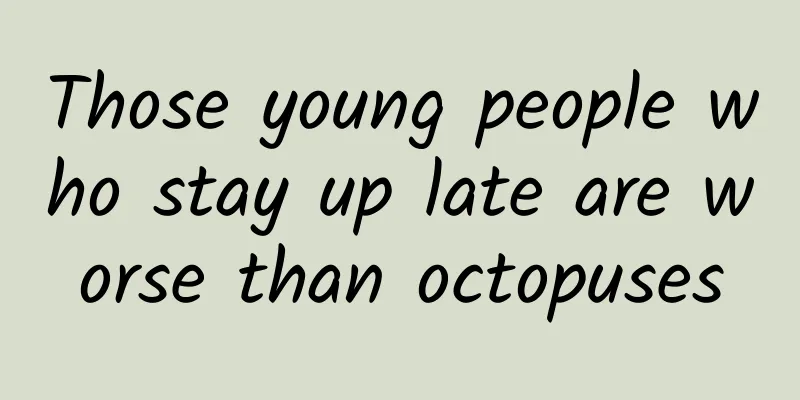To what extent will animals sacrifice for their fellows?

|
Edward Wilson, an American biologist and naturalist, is known as the "Darwin of modern society" and the "father of sociobiology." Wilson is known for his research in ecology, evolutionary biology and sociobiology. He has won the National Medal of Science, the Crawford Prize and two Pulitzer Prizes. In 1996, Wilson was named one of the 25 Americans with the greatest influence on contemporary America by Time magazine. Unfortunately, not long ago, on December 26, 2021 local time, Wilson died in Massachusetts at the age of 92. The most essential difference between humans and other animals is that humans have obvious "sociality". Humans can accomplish many seemingly impossible tasks through mutual connections, cooperation, and a variety of social activities. Is sociality unique to humans? Perhaps not. Wilson introduced "society", which should belong to human behavior norms, into the field of biology and wrote "Sociobiology: The Behavioral Principles and Connections of Individuals, Groups, and Societies". Thus, a new scientific discipline was born. This book was selected by the International Society of Animal Behavior as the most important animal behavior book in history. At the same time, the book's assumptions and inferences about human behavior also caused a major debate in 20th century biology: Does human nature have a biological basis? Whether it is possible to reduce humans to the category of biological organisms for study is a serious question, and it is also the reason why Chapter 27 of this book is controversial. Social insects have many clear examples of altruistic behaviour that has evolved through lineage-level selection. Altruistic responses are directed not only to offspring and parents, but also to siblings and even nephews, nieces and cousins. When the nest walls of higher termites, such as Coptotermes, are destroyed, the defenseless white nymphs and worker ants flee into the nest and hide deep inside, while the soldier ants struggle to flee from the nest and defend against invaders from outside the nest. Injured fire ant workers were more likely to leave the nest and, on average, were more aggressive than their uninjured sisters. Workers of the red-bearded ant that were dying tended to leave the nest together. The leader of a group of baboons will monitor the surroundings from a prominent position while other members are foraging. If a predator or a competitor from another group approaches, the leader will roar and run towards the intruder in a threatening manner, and other male baboons may also join the fight. When a group of baboons retreats, the leader follows behind as a rear guard. Immature Adélie penguins help defend nests and chicks belonging to other birds from skuas. The colonies are so large and the range of the colony is so wide that it may be difficult for the defenders to distinguish closely related individuals, but as far as I know, this cannot be ruled out. The most obvious expression of parental sacrifice is the display of frenzy by birds in the presence of predators. Such displays are obvious acts designed to attract the attention of the "enemy" and draw it away from the object being protected, and in many cases, predators are drawn away from eggs or young birds. Bird species from different families have evolved their own unique displays to distract predators, the most common of which is feigning injury—which, depending on the species, can range from a simple interruption of normal flight to an elaborate simulation of injury or illness. When a female American Nightjar detects an intruder approaching her nest, she will fly noticeably close to the ground and eventually land on the ground in front of the intruder (away from her nest) with her wings drooped or spread. The female American Nightjar performs a decoy display. To lure an intruder away from her nest, she flies to the ground with her wings down (left) or outstretched (right). (Original by JB Clark; based on Gramza, 1967) Wood ducks (Aix sponsa) and black-throated loons (Gavia arctica) spread only one wing as if the other was broken, and waded in circles as if their feet were mutilated. A Prairie Warbler (Dendroica discolor) plummets from its nest to the ground and frantically wags its tail in front of the observer. When an intruder arrives near a nest of a New Zealand Pied Stilt (Himantopus picatus), the seemingly injured stilt appears to jerk its legs and flap its wings simultaneously, prancing and strutting around a field like a strange toy animal propelled by metal springs - its extra-long legs creating an unusual effect. They often perform the act of pretending to be dead in groups on the sand far away from their eggs and nests. Many stilts perform almost all of the above behaviors, which is indeed a very strange scene. In addition to pretending to be injured, there are other behaviors that can be used as seduction performances. Oystercatchers (Haematopus ostralegus) and dunlins (Calidris alpina) often engage in flying displays normally reserved for courtship, and many seaside birds lie prone on the ground as if they are brooding eggs instead of feigning injury. The short-eared owl (Asio flammeus) and Australia's famous blue fairywren (Malurus splendens) even pretend to be baby birds, fluttering their wings to beg for food. Anecdotal evidence in the literature suggests that different types of baiting displays do attract predators, and there is no doubt that the adults performing these displays increase the risk to themselves and reduce the risk to the younger animals. ——The above is excerpted from "Sociobiology" Sociobiology is a comprehensive product of the combination of natural science and social science, which also requires us to think about what sociology studies and what are the specific manifestations of biological sociality? Human sociality includes relationships and behaviors, and the sociality of organisms is also relationships and behaviors. How do organisms that have almost no advanced intelligence complete relationships and behaviors? Introducing sociality into the biological world is just an academic research method, but using the principles and methods of the biological world to study humans raises the issue of accepting human emotions themselves. What do you think? END Editor/Xiao Xitushuo Tadpole Musical Notation |
<<: As a close relative of bears, why don’t giant pandas hibernate?
>>: The entire universe exists in an ice cream cone?
Recommend
Toutiao account optimization plan!
"Whatever does not destroy me will make me s...
Uncle Wolf's Tik Tok Popular Traffic Monetization Secrets 1.0
Uncle Wolf's Tik Tok Popular Traffic Monetiza...
He may be the world's first Apple iPhone 6s user
Thanks to the International Date Line, the first ...
What makes Newton's laws true? Here's a simple way
Why do Newton's laws hold true? Here's th...
Huawei releases the latest Internet of Vehicles platform: Digital cars are no longer a dream
According to foreign media reports on June 12, Hu...
[Creative Cultivation Program] What efforts has mankind made to search for habitable planets outside the Earth?
Author: Wang Zifeng Review: Liu Qian On June 20, ...
Qualcomm and Google jointly announced new technology: Android R can replace ID cards and driver's licenses
[[284872]] Android Q (Android 10) has been releas...
Was Newton's law of universal gravitation plagiarized from a book in the Ming Dynasty of China?
Recently, there have been a lot of hilarious &quo...
Stop cleaning up "zombie fans" WeChat official: This is a scam and is extremely harmful
You may have hundreds or even thousands of WeChat...
"Seeing a world in a grain of sand", the 200 million-year rhythm of the earth's crust, disaster omens and the advent of life
William Blake, the first important romantic poet ...
Why do some companies keep saying that they value operations but always fail to do so?
Operations work is very detailed, and some company...
Short Video Academy·Director Shooting and Editing Core Course, master the two practical skills and underlying thinking necessary for video creation
Short Video Academy·Director Shooting and Editing...
Adi Adi has been repeatedly embroiled in food safety issues. What are the hidden concerns behind its franchise expansion?
Food is the most important thing for people. In t...
How much do you know about the information flow advertising routines of highly profitable products?
After reading this article, I hope you can improv...
How to write the Double 12 event plan? This universal solution is for you!
It feels like everyone is busy and exhausted from...









